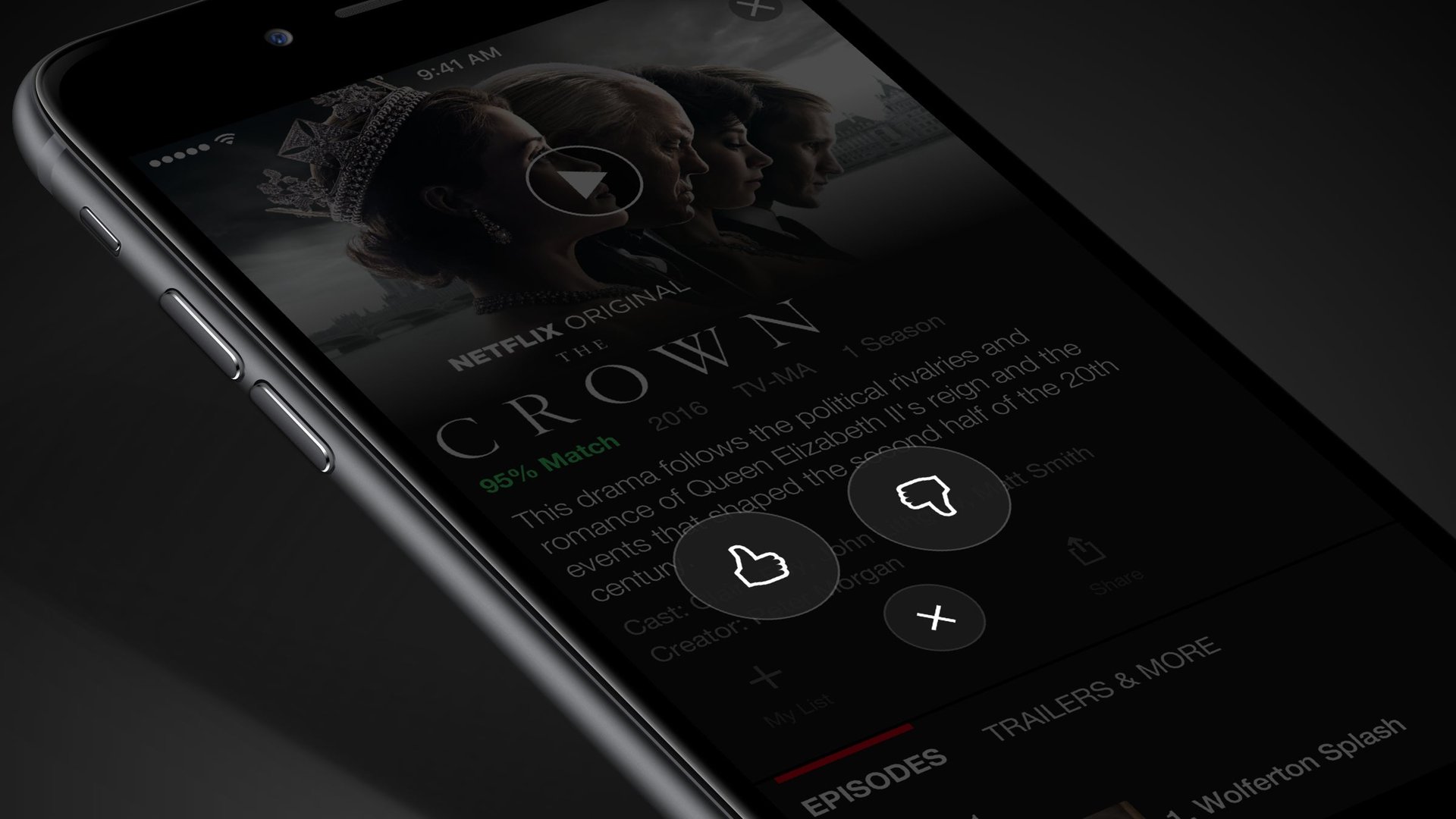Netflix doesn’t care whether you think the film is good—it just wants to know if you liked it
Starting today, Netflix users will no longer have star ratings to help them decide what to watch. Instead, they’ll see a percentage score for each title that indicates how likely Netflix’s algorithms think they are to like that series or film.


Starting today, Netflix users will no longer have star ratings to help them decide what to watch. Instead, they’ll see a percentage score for each title that indicates how likely Netflix’s algorithms think they are to like that series or film.
“This is the promise of internet TV,” said Cameron Johnson, director of product innovation at Netflix, “that you can choose what you want to watch.” It also has ”thumbs up” and “thumbs down” buttons now, instead of stars, for users to indicate what titles they enjoy. (A thumbs down will banish that title from your homepage.)
A quirky Netflix comedy like Santa Clarita Diet could be a 98% match for one person and a 65% match for another. Scores below 55%—either because Netflix doesn’t have enough data to deduce how compatible the program is, or because the data suggests you won’t enjoy it—won’t be displayed.
The scores are based on what users have watched on Netflix, and what they liked and didn’t like. This is the way ratings have worked on Netflix for awhile. But some subscribers didn’t understand that.
They thought the stars were a measure of quality and would therefore rate titles based on whether they thought they were objectively good or bad. What Netflix, and its algorithms, really wanted to know is whether or not viewers enjoyed the programming.
With the stars rating method, Netflix found that some subscribers would rate titles they aspired to watch more highly than what they really watched. For example, people would give movies high ratings, but that’s what they preferred to watch most of the time. They’d gravitate more toward sitcoms. That lead to bad recommendations. Johnson said the ”thumbs” data aligned more closely with what people actually played and took them out of that ”critics mindset.”
Netflix said it saw a 200% increase in ratings when it switched to the thumbs in A/B tests. “With the thumbs up and thumbs down, people intuitively understand that they’re teaching Netflix what they like and don’t like,” he said. “It’s that simple shift in perception that has lead to a huge shift in usage.”
The new system gets at the heart of the way the streaming-video giant approaches ratings and reviews. Whereas others like Amazon highlight ratings that compound what other people, usually members on the same service or professional critics, think of the programming, Netflix’s ratings shows how compatible it thinks the title will be for you, and you alone, based on your own viewing history.
(Netflix also has written member reviews, but they’re buried in the details for each title and are only accessible on desktop.)